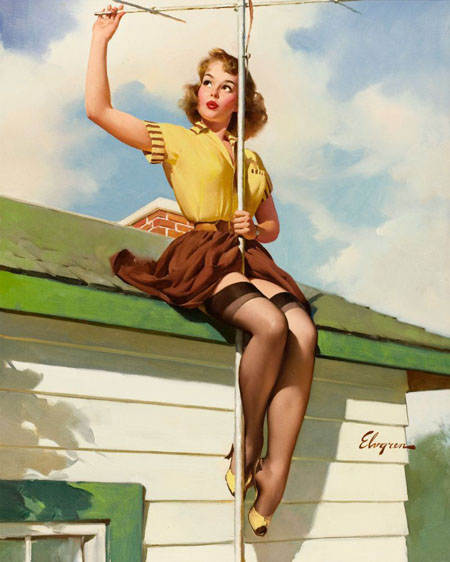Yesterday we published the first part of the post Denis Wittman from the company “Erd” under the title “How to become a millionaire in the App Store or a few formulas about promotion and sales“. Today we are publishing the second part of the post, originally published on Habr.

So, in the last article, we ended up figuring out how to get “impressions” of our application in the AppStore.
Sometimes it is mistakenly believed that the launch is the most difficult. This, to put it mildly, is not so. The real work begins after the launch.
The team, sincerely confident in the quality of its project, is waiting for a vertical rise in sales with an asymptote to infinity… But usually it turns out more like a New Year’s fireworks display – a short rise, a rapid fall and oblivion.
Insidious B and C. are to blame for everything. Our application competes with other applications in the top for the user’s attention. If competitors have better indicators, you fall. The lower you fall, the fewer views you have, the harder it is to climb back up. Your Appeal (B and C) should be better than the competition. If you lose more than 3-4 positions a day, you have a bad Appeal.
It should also be remembered that almost all applications in the top regularly use advertising, PR and purchase of installations. So, in order to make money, we don’t just have to be better – we need to be damn better.
B is the conversion of top views to page views of our application. It depends on only 3 things:
- Price
- Icon
- Title
That’s it, there’s nothing else. It doesn’t matter how much money you have invested, what cool graphics and mechanics. Only these 3 parameters.
Price
- A free app is downloaded 20-25 times more than an app for $0.99.
- $1.99 — on average twice less than 0.99
- If the application costs $ 3, it will be downloaded on average 70-150 times less often than if it were free.
Title
Ideally, it should be a brand in itself. That’s just where to get it for all brands? If we discard the dubious way of mimicry under existing ones (e.g. Temple Fun), then you will have to come up with the name yourself.
- The name should be clear
- It should be understandable by the first 6 letters. Since the cute inscription “free” cuts off everything else. Accordingly, if you are not in the top ten, then most likely your name will simply be lost.
- The name should be attractive
Icon
I will give an internal dialogue that I have to conduct with myself when the cost of developing an icon begins to exceed a couple of thousand rubles
— No, there are no perfect icons.
— Yes, the icon will have to be changed.
— Yes, it will have to be changed again
— No, the icons are really different from each other
— Yes, it makes sense
The right icon is a process. This is, in general, an almost continuous search. A properly selected icon increases the number of downloads at times.
If you managed to drive the user to the application page, the work “C” begins.
C – conversion of your application’s page view to download.
Play a role:
- The first couple of screenshots
- The first paragraph of the description
- Number of grades and average grade
To a much lesser extent:
- The rest of the description text
- Other screenshots
- Reviews
Harmful tips #1
1. Select a test market and launch on it. Throw the app in TOP and then torment Appeal until you get an acceptable result.
2. Make 10 icon options. And test it on a large sample (at least 50 people). Select 2-3 options and test them on the test market.
3. Do the same with the name. They don’t know English in Russia. In France, too. In Germany, in general, too. If you are not a super brand, localize the name.
4. Put the most attractive screenshot first. The next most attractive is the second. The third most attractive is the last. Don’t even try to choose for yourself – test the screenshots on the sample.
5. The first paragraph should not be an introduction. It should be the essence of the application and the greatest marketing appeal at the same time
6. There should be a lot of ratings. They should be great. In the sense of 5.
7. Reviews should also be positive, real (well, or similar to real ones), there should also be a lot of them. This is especially important when launching the application.
8. If you ask him to rate in the application, then everyone will rate 50-200 (depends on the quality of the application and the persistence of the request). Somewhere every 500 – will write a review.
Virality. Doctor, will I live?
J is the virality indicator.
To put it in human words – “how many people will install the application on the advice of one user.” As it is easy to guess, if the indicator is greater than one, we will observe an explosive, natural growth of application installations.

A significant part of Success story is related to the high virality of the application. There is something embedded in the application that makes the user recommend the application to his friends and acquaintances. Virality allows you to bypass the faded Appeal. It does not depend on getting into the Top. In fact, this is the first indicator that is related to the application itself, and not to marketing efforts.
From the sad – virality, by no means synonymous with quality. These two indicators correlate, but only on negative values. It’s just that a good application may or may not be viral. Analyze your app and answer a simple question: why will it be recommended to friends? Just in case — “Because it’s gluey…” — sounds plaintive.
The main directions of virality:
1. It is profitable for me to invite a friend to the app. Attracting a friend to the application carries bonuses for the user himself (for example, it becomes convenient to exchange documents or the user receives 100 gold coins).
2. I am interested in calling the user in the application. The result that a friend will get using the application is interesting to me (“and he is really smarter than me” or “now I can look at his photo”)
3. I can boast of the application (from here, the legs of all sorts of “flashing lights” grow, and instagram has not gone far)
4. Honest recommendation – the application is really good, and I recommend it.
5. It’s convenient for me to invite a friend to the app. The application has a convenient infrastructure that helps to invite and attract friends.
Monetization or egg broth
H – how much we earn on one installation. With paid applications, everything is clear – how many installations, so much and earned. But since a free application is installed 20-25 times more often, then simple arithmetic works – if we can earn more than 4-5 cents on a free installation, it is more profitable for us to make the application free. I am not considering an advertising model, as I do not fully know it.
Thousands of articles have been written about monetization systems, and the choice of a monetization system is largely determined by the application itself. For example, now the fashion is for F2P systems with micropayments, with high ARPPU, with a good ratio of DAU to base with a moderate conversion of FU to PU.
Therefore, reasonable questions that arise:
1. Why will the user launch the app again?
2. What else can he buy in your app?
3. How much money will he be able to spend?
4. How the application “hooks” the user at the beginning, not letting him break
Etc.
It turns out somehow very difficult and quite vague. So I’ll just make a few observations:
- Appstore is the territory of low prices. For 3 bucks, your soul will be taken out. Over 10 – you have to be a genius app. As a result, there is no place for average apps with an average price in the Appstore.
- 10 cents from a free installation is a good indicator. 20 is great. More than a dollar – Eldorado.
- The average conversion from a free app to a paid one is about 4%.
- You can earn more on the internal In-App, but they are much more difficult to manage.
- You can earn money on any monetization system, except for a bad one.
- If the application is downloaded, but not paid, this is already a victory.
- In the top 200 cash applications – 102 are free. There are 8 free apps in the top 10, including the first 4.
Harmful tips #2
1. The application should earn enough to be enough for advertising and buying installations that allow you to stay in the top. If the app doesn’t earn that much, try another level of “support”.
2. Experiment with the price. Sometimes an increase in the price of an app or in app allows you to earn more, even with a smaller conversion. And sometimes it is more profitable on the contrary – a reduction.
3. Figure out how to increase the average user’s check in the application. What else can he buy? What else can he spend money on?
4. The free app should catch on from the first second. Since, unlike the paid one, the sale has not yet been completed.
5. Run in the monetization system on the test market, just like Appeal.
6. Lay down virality mechanisms and a monetization system at the earliest stage of application design.
